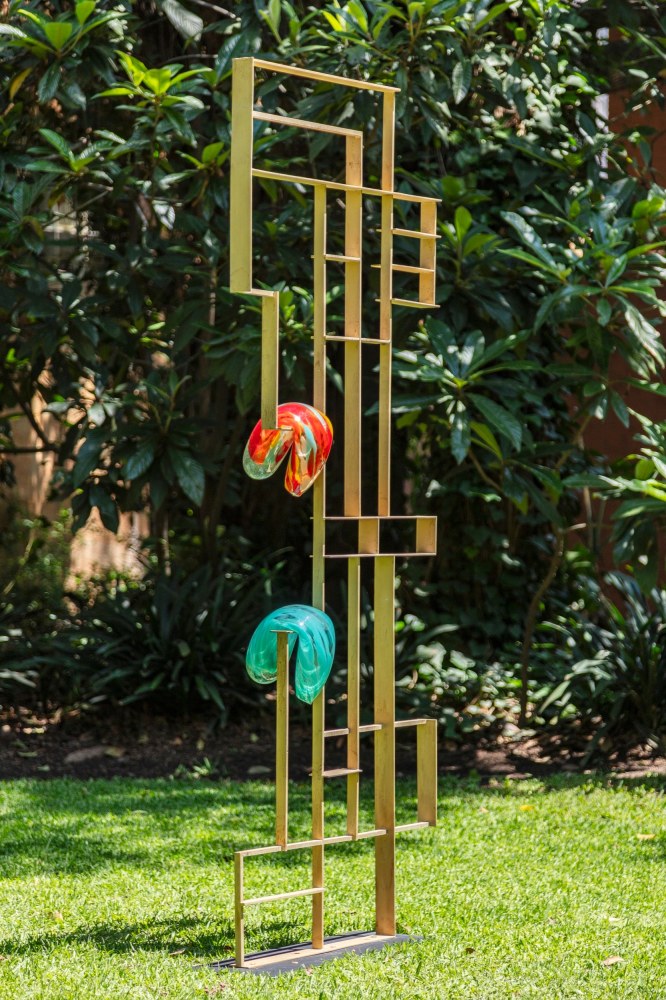

Sofía Táboas revisits the architectural work of Luis Barragán in dia cronía, with the aim of exploring a shared interest in their practices: the relationship between light and color. The artist has extracted five color palettes derived from the various changes produced by the light’s reflection on the colored walls in five of the architect’s constructions in Guadalajara. Each of these Pantone palettes is used in creating a painting. The surfaces of these works are irregular and originate from an ironwork design that serves as a modular grid. Táboas applies the multitude of colors within these modules or fragments and uses a method that incorporates chance. The result is five paintings that appear as fields of linear forces moving in different directions, with distinct highlights, yet coherent in their chromatic investigation. In each piece, only a fragment deviates from the Pantone; its colors come from another building neighboring Barragán's constructions—a complement detached from the actual urban context, which, to some extent, draws a boundary for the idealizations of modern architecture.
Along with these paintings, dia cronia also displays several sculptures made of brass and blown glass. These sculptures are replicas of the ironwork designs, standing autonomously and functioning as objects outside of their original context and devoid of their initial function. Blown glass figures prop up and hang from the structure, as if the glass spheres used in Barragan’s interiors as decorative elements had lost their rigidity, now appearing soft and flaccid. These blown glass shapes contain fragments of colors that may allude to the stained or colored glass used in some of the architect’s buildings. In fact, each sculpture could be perceived as a unique sculptural stained glass window that, in its design, reconciles solidity and transparency, opacity and light-chromatic concepts, as well as the rigidity of a grid and a more anomalous and capricious shape derived from the blown glass production process.
The gardens at Barragan’s Casa Ortega provide the stage for dia cronía, allowing Táboas to engage with multiple aspects of the architect's landscaping and gardening. The installation of the pieces echoes her interest in evoking wonder. Outdoors, the sculptures interact with natural processes, enabling materials such as brass and wood to develop a patina over time. The work is also exposed to the effects of natural light throughout the day, thus connecting it to the passage of time and allowing for contemplation of changes and chromatic effects. This investigation resonates with the interests and concerns in Táboas’s practice concerning the perception and experience of space, light, and color.